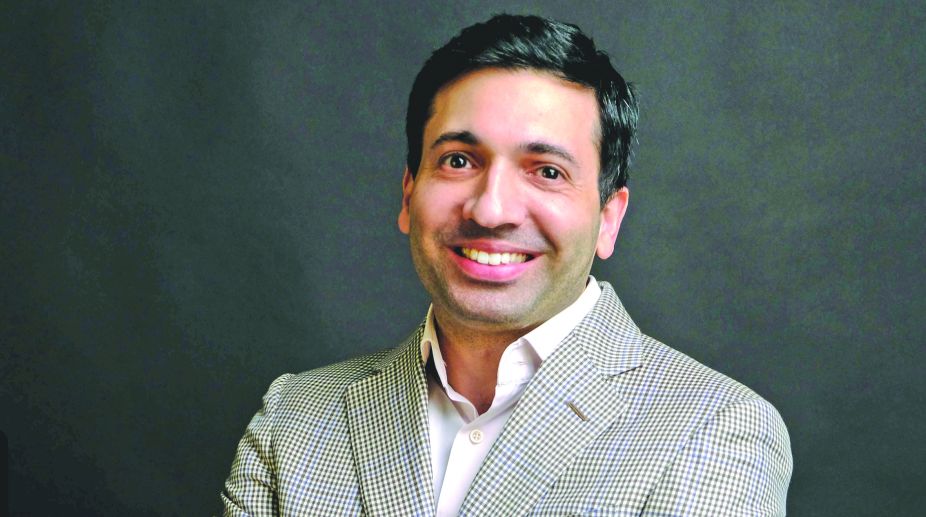India is slowly but steadily moving towards alternate mode of employment with the growing number of aspirants and saturating market. While engineering and medicine continue to be highly respected in the social constructs, today fresh graduates have been adventurous towards the prospect of higher studies. Jitin Chaddha, director of Indian Institute of Art and Design offers his perspectives on the education system of the country and a lot more. Excerpts:
Q Tell us about the vision that sowed the seeds of IIAD?
The Indian Institute of Art and Design was born out of a compelling need to cultivate creativity in students and further the cause of design, not just as a discipline but also as a change driver for organisations, communities, countries and the world at large. We believe that contemporary learning is less about rigid lectures and the boundaries of authority and more about nurturing ideas in a collaborative, multidisciplinary and mentor-driven environment.
Advertisement
We hone students’ craft not only through lectures and theory based exams but also through continuous engagement with real-world design problems, live projects, clients from the industry and end-users. Through our learner-centric ethos, we are preparing the next generation of reflective, procedurally rigorous, ethical and entrepreneurial designers to define the future of the creative economy.
Q How has the journey been as an educational entrepreneur? What are the challenges you have faced?
I have been in the field of higher education for over 12 years and the journey has been very gratifying. I am awed by the immense potential of the young demographic of this country. There is a great need, now more than ever, to channelise and realise this demographic dividend through diverse educational programmes that meet the needs of an aware student cohort.
Q What’s your take on the recent education system in our country?
It is great to see creative courses becoming a part of mainstream curricula for several educational institutions. A student in India is spoilt for choices in terms of the types of disciplines that are on offer. However, there is a need for stronger push towards teaching-learning practices that are focused on employability and preparedness to confidently enter the workforce. Life skills and application based approaches are critical as they help students develop independent perspectives and inculcate the spirit of leadership and entrepreneurship. Rigid and one-dimensional methods of learning must give way to open and flexible set-ups that build emotional intelligence, interpersonal skills, empathy and tolerance for ambiguity – skills that will form the arsenal of future professionals.
Q When do you see Indian higher studies institutions getting at par with the foreign institutions?
Our aim should be to build a learning ecosystem so fecund and agile that we automatically become the destination of choice for students globally. This is an exciting time for education where thought leaders, institutions, educators, and technology are synergistically coming together to offer unique learning experiences. Indian educators have a lot to offer in this context. Brand India is gaining impetus and our education sector will become stronger by spearheading such trans-cultural and interdisciplinary collaborations. We look towards government bodies to encourage and facilitate such interactions so that our educational systems can evolve faster and remain relevant to the learner and the employer.
Q In a country where parents want their children to join conventional courses, an increasing number of students are joining the field of creative arts. What do you think is the reason behind this trend shift?
This wave of the information age has certainly swept students, parents and influencers in a direction where they can see an ocean of opportunities beyond conventional courses and traditional careers. School systems are also educating students about meaningful avenues including those in the creative industries. There are business verticals where organisations are specifically seeking creative thinkers and problem solvers. This knowledge is causing a paradigm shift in our perception of careers and professions that matter.
Q Do you think education is overpriced in our country?
We are entering an era where higher educational institutions are striving to establish a global footing. Ideally, pricing for any service should be commensurate with the value it offers and the cost of inputs that go into providing that service. While we aim to establish international relevance, there is a simultaneous need to keep the pricing such that education is inclusive and accessible to aspirants of varying means.
Specifically, design education requires heavy investment in tools, technology and infrastructure to support the learning needs and match the dynamic curricula required to prepare students adequately for the industry. In addition, because design is a highly specialised profession, the faculty mentoring on the courses are also industry veterans with deep subject matter expertise. Bringing together the human, technological and infrastructural capital to offer internationally relevant programmes at a reasonable fee is a delicate balance that one must strike to provide the best value.
Advertisement











